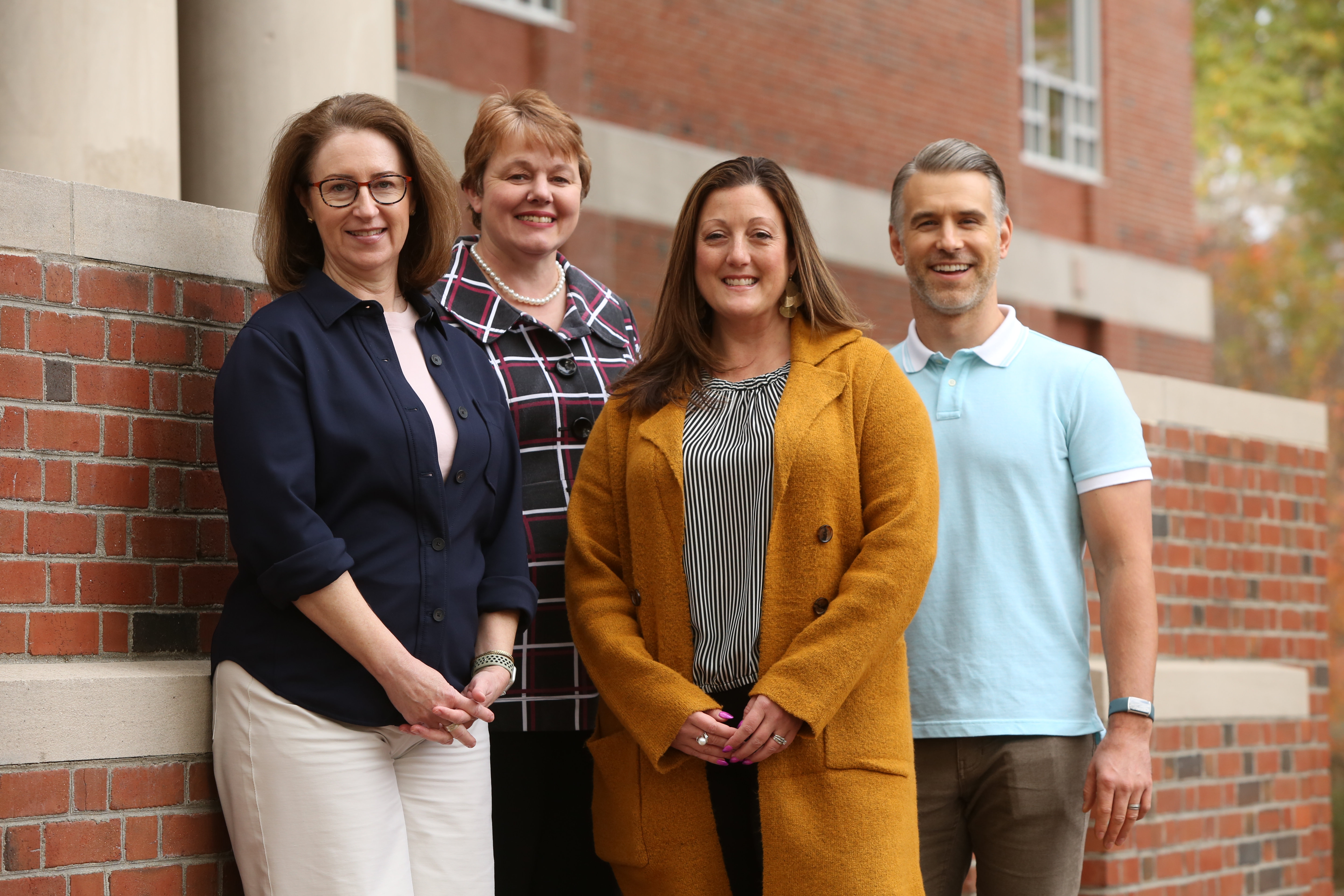‘Asking the hard questions’: W&M team developing proposals for AI literacy within the curriculum
In late November 2022, OpenAI released its generative AI tool ChatGPT. For Lori Jacobson, director of the Writing and Communication Center, the implications of this instant sensation were unavoidable: “It pretty quickly became clear that everything we do with teaching was going to have to be reevaluated in the context of this new tool.”
By leading a team from William & Mary to participate in the American Association of Colleges & Universities’ (AAC&U) Institute on AI, Pedagogy, and the Curriculum, Jacobson seeks to help faculty navigate this rethinking of curricula and classroom practices in the age of AI.
Launched Sept. 12, 2024, the AAC&U AI Institute has brought together 124 institutions of higher learning to formulate and implement strategies for the incorporation of AI on their campuses. Through monthly meetings, webinars and mentorship from AI experts, participating teams will develop action plans to bring back to their respective institutions by April 2025. W&M has partnered with the University of Virginia and Virginia Commonwealth University to collaborate on developing solutions.
Specifically, Jacobson hopes to craft a plan for W&M that will guide faculty in cultivating undergraduates’ AI literacy — a term referring to the set of skills required for students to understand the role and ethical implications of large language models and generative AI in their academic work and in their lives and careers beyond college.
Elizabeth Losh, Duane A. and Virginia S. Dittman Professor of English & American Studies, a scholar who has studied computer-generated text for over two decades and currently serves as co-chair of the Modern Language Association and Conference on College Composition and Communication Joint Task Force on Writing and AI, underscored the importance of Jacobson’s vision. Having previously worked with Jacobson to survey hundreds of W&M students about their attitudes toward generative AI, Losh noted how the team participating in the AI Institute is responding to undergraduates’ self-perceived needs.
“Our students worry about how these technologies might impact their learning and opportunities in the workforce, and they are asking for more information about these technologies to make more informed decisions,” Losh said.
After ChatGPT came on the scene, many W&M faculty took on the task of providing such information in the classroom. The Studio for Teaching & Learning Innovation (STLI) began offering workshops, such as its ongoing AI Quick Bite Series, to help more instructors do the same.
But Jacobson realized that students who happened not to be enrolled in a course prioritizing the use of AI might complete their undergraduate education without receiving any AI literacy instruction whatsoever.
For Jacobson, this disparity represents an “equity gap,” as “the workforce is demanding these skills, [and] they’re important in civic life because of the degree to which bias and misinformation can get promulgated by AI.” She became convinced that a consistent set of standards for AI literacy within the curriculum would be necessary to close this gap at W&M.
Around the same time, the AAC&U announced its AI Institute. Jacobson soon approached the Arts & Sciences Dean’s office about sponsoring a team to represent W&M. She received a “willing and excited” response.
Joining her on the team are Candice Benjes-Small, head of research for W&M Libraries; Mark Deming, assistant teaching professor of government; Josh Erlich, professor of physics and director of the Center for the Liberal Arts; Lindy Johnson, associate professor of education and chair of curriculum & instruction at the W&M School of Education; and Katalin Wargo, director of academic innovation & pedagogical partnerships at STLI.
According to Jacobson, the first step in the team’s work will be “defining what functional and critical AI literacy is in terms that make sense to stakeholders across disciplines.” She envisions “a critical AI literacy statement that anyone on campus who is involved in supporting AI literacy could use or could reference.”
Jacobson and her colleagues will then formulate recommendations for AI interventions at key junctures in the undergraduate experience. For first-year students, Jacobson suggested, the focus would likely be on academic integrity and understanding individual faculty members’ preferences regarding the use of AI, as well as taking stock of “how AI can help or hinder their learning.” For seniors about to graduate, the emphasis might shift to career and civic skills.
Additional goals include the identification of technological or policy hurdles for the implementation of their ultimate action plan at W&M and the development of ways to assess student attainment of AI skills.
Jacobson stressed her team’s respect for all their colleagues’ feelings and approaches concerning the use of AI, ranging from fear and distrust to excitement and an embrace of the rapidly evolving technology. Recognizing that redesigning courses takes time, Jacobson explained that the team will strive for easily implemented proposals and will not seek “a wholesale overhaul of anything.”
Indeed, Jacobson suggested that there are ways in which an AI-based overhaul of education at W&M would not necessarily be desirable. “AI is being implemented in the workforce really quickly,” she said. “It’s being implemented because it makes a lot of knowledge work more efficient. … But when it comes to learning, efficiency isn’t always great. Learning requires friction.”
The team participating in the AI Institute hopes to help students embrace the challenges friction represents, not only in their learning, but also in the personal choices they make concerning the application of AI. According to Wargo, this program “presents an opportunity to lean into and lead approaching Gen AI through an ethically responsive lens, which W&M is well positioned to do as a liberal arts institution and the nation’s alma mater.”
“That’s the most critical part of this,” Jacobson agreed. “I really would love to see our William & Mary students graduate asking the hard questions about AI.”
















